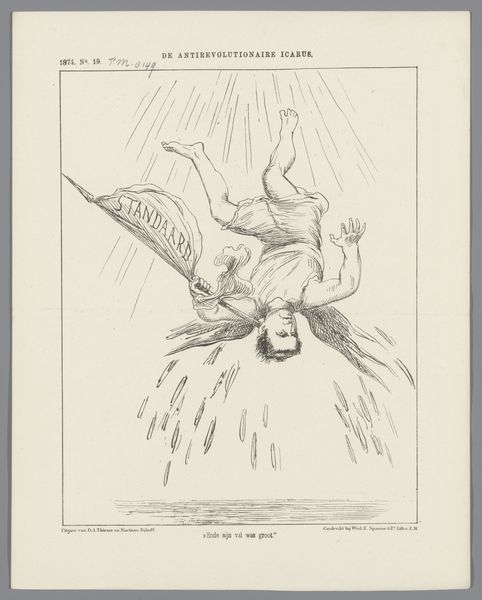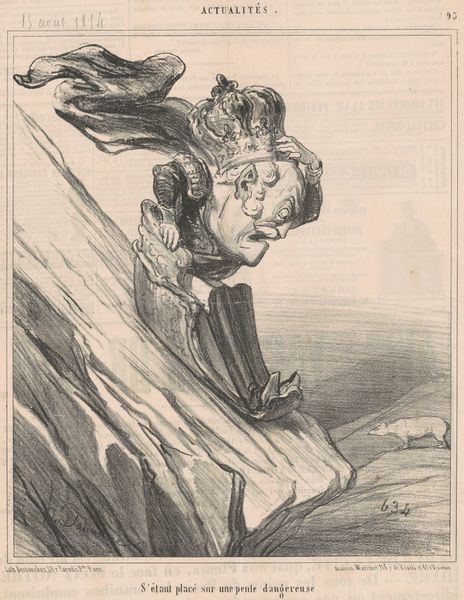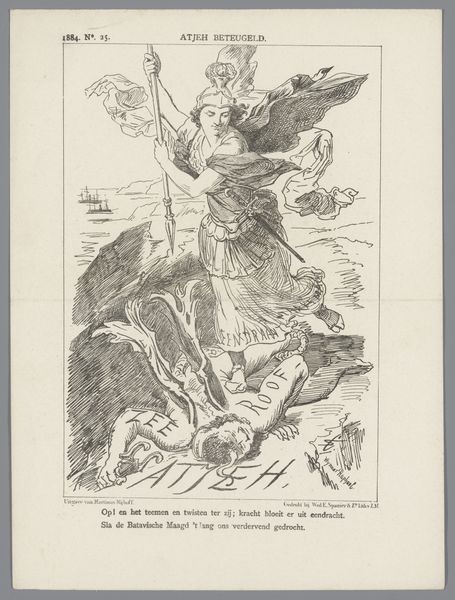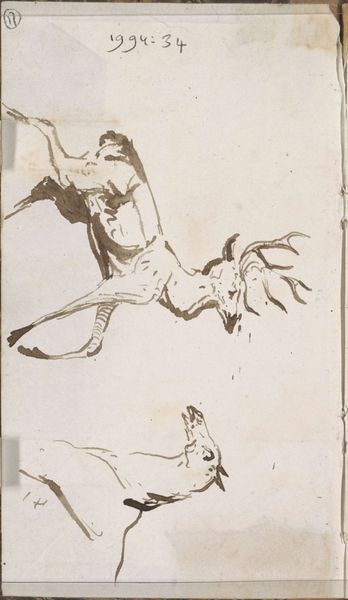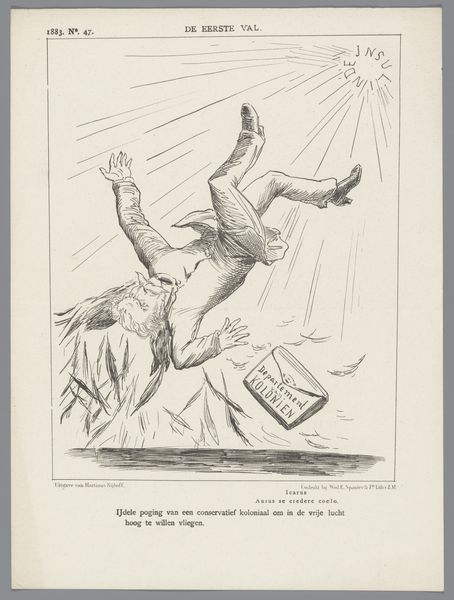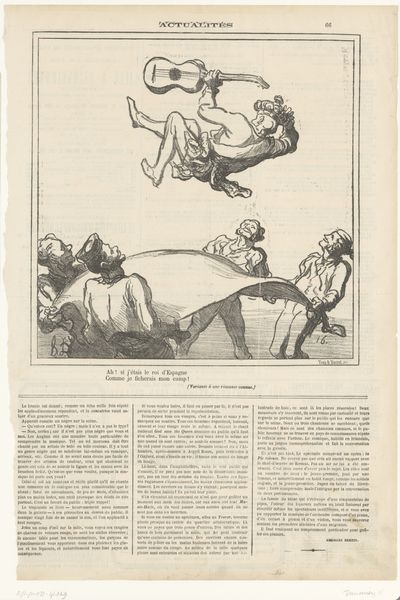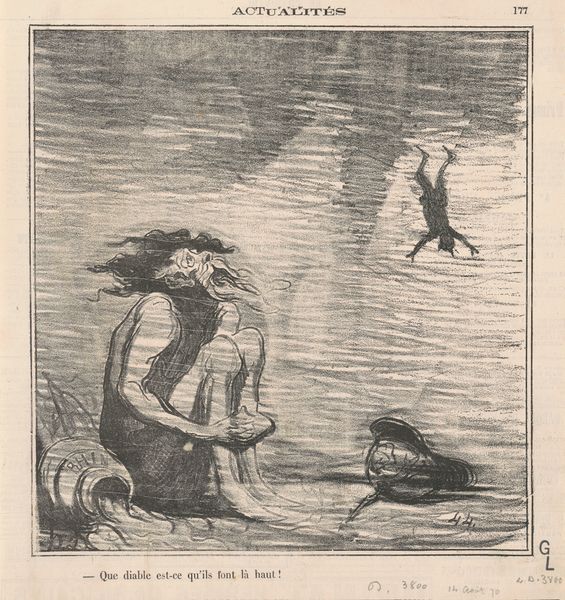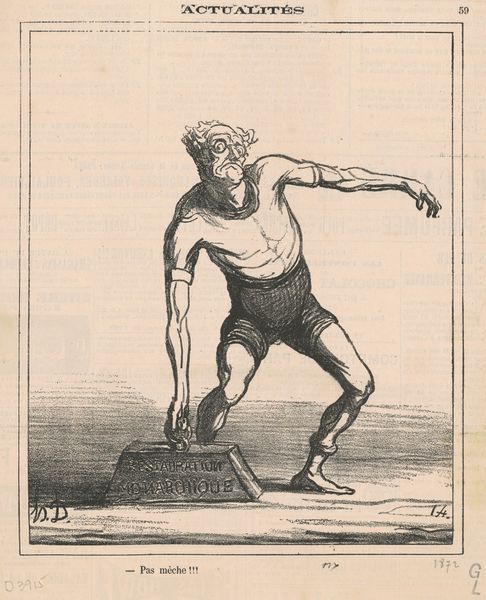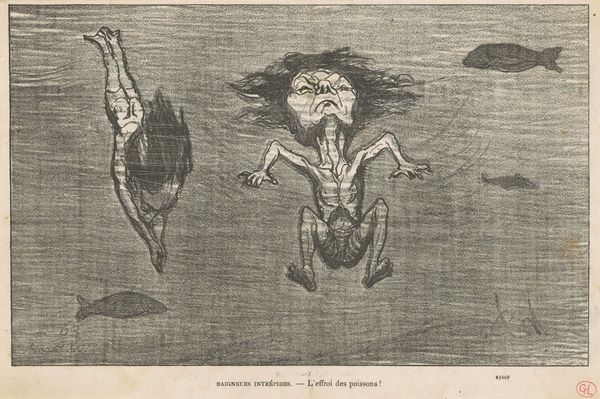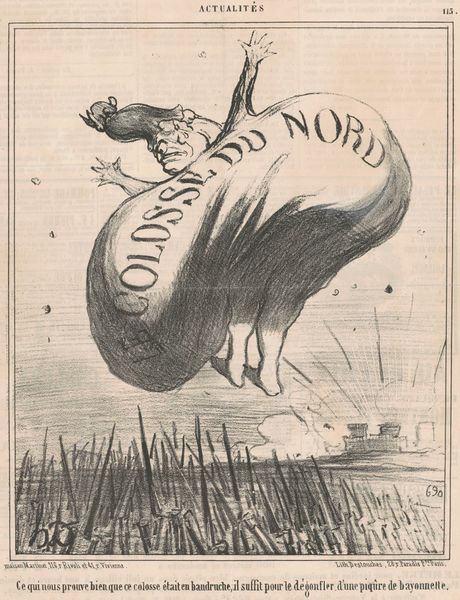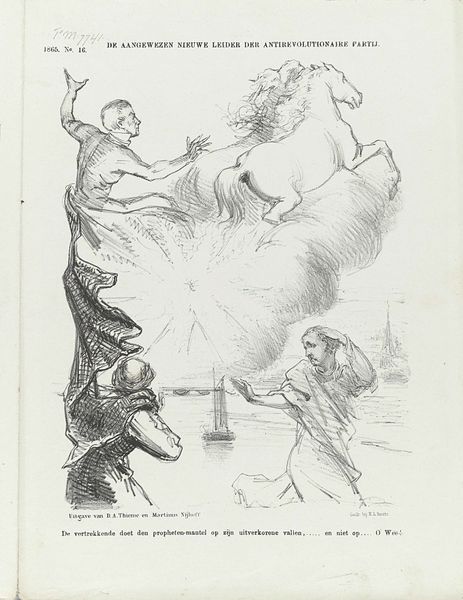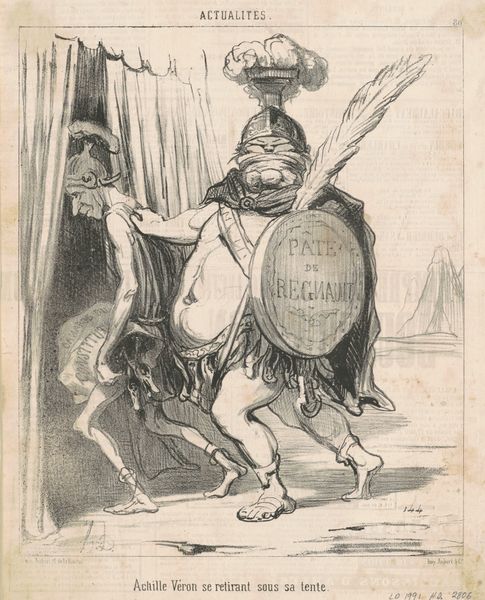
drawing, lithograph, print, pen
#
drawing
#
narrative-art
#
lithograph
# print
#
french
#
caricature
#
figuration
#
romanticism
#
pen
Copyright: National Gallery of Art: CC0 1.0
Editor: This is "Le nouvel Icare..." a lithograph by Honoré Daumier from the 19th century, showing Icarus plummeting from the sky. What strikes me most is how undignified the figure looks; he’s all awkward limbs and a panicked expression. How do you interpret this work? Curator: The plummet itself becomes a powerful symbol of hubris and the inevitable consequences of overreaching. Think about the visual cues: the scattering feathers, the grimace on Icarus's face, the cities below – Bomarsund and Sebastopol – marking sites of conflict during the Crimean War. What does the sun typically represent? Editor: Power, maybe? Divine authority? Curator: Precisely. Here, the sun is explicitly named as “Soleil de l’Orient,” linking it to the East, a region then fraught with imperial ambitions. Daumier critiques not just individual folly, but also the potentially disastrous ambitions of empires and nations. Consider the way Icarus is drawn. Does he look like a hero? Editor: Not at all! He seems quite comical, even pathetic. His wings seem too small. Curator: Daumier uses caricature to deflate the grand narrative, reminding us that ambition can be ridiculous, and failure, all too human. The cultural memory of the Icarus myth serves as a potent reminder of boundaries and limits. But he's also wearing military boots. Editor: I see! So, Daumier might be using the Icarus myth as a cautionary tale about military overreach as well? Curator: Exactly. The enduring power of myth allows Daumier to tap into collective anxieties about power, conflict, and the perils of unchecked ambition, especially in a rapidly changing world. Editor: I never would have seen all that. Now the image feels less like a simple retelling of a myth, and more like a political statement disguised as a cautionary tale!
Comments
No comments
Be the first to comment and join the conversation on the ultimate creative platform.
